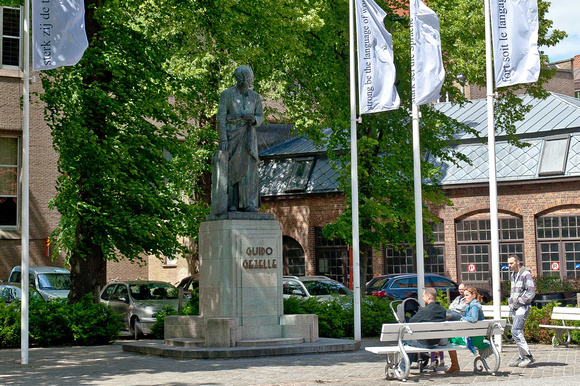He was born in
Bruges in the province of
West Flanders, where he also spent most of his life. He was
ordained a priest in 1854, and worked as a teacher and priest in
Roeselare. He was always interested in all things in English and was given the prestigious right of being the priest for the 'English Convent' in Bruges. He died there in a small room, where it is still forbidden to enter.
He was the son of Monica Devrieze and Pieter Jan Gezelle, a Flemish gardener in Bruges. Gezelle was the uncle of Flemish writer
Stijn Streuvels (Frank Lateur).
There is a museum of his works close by the English convent and also a small bar named after him.
He tried to develop an independent Flemish language, more or less separated from the general
Dutch language, which had certain more "
Hollandic" aspects. The Dutch he used in his poems was heavily influenced by the local
West Flemish dialect. His works are often inspired by his mystic love towards God and Creation. Later, his poetry was associated with literary
Impressionism, and he is considered a forerunner of that movement.
Gezelle also was a translator of poetry and prose, most famous now for his translation of
Henry Wadsworth Longfellow's
Song of Hiawatha, published in 1886. He had already read the original at Roeselare in 1856 and was interested in it because on the one hand, the American Indians fascinated him, and, on the other, he liked its portrayal of Christian missionaries.
For his linguistical mastery, Gezelle is till today considered one of the most important poets in Dutch.


